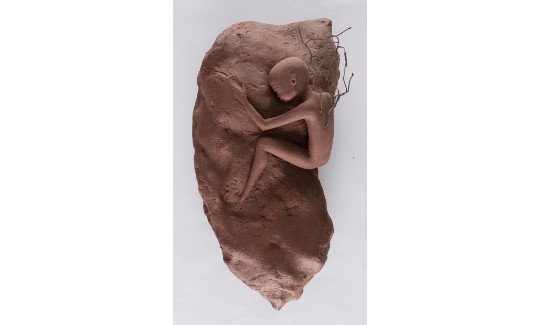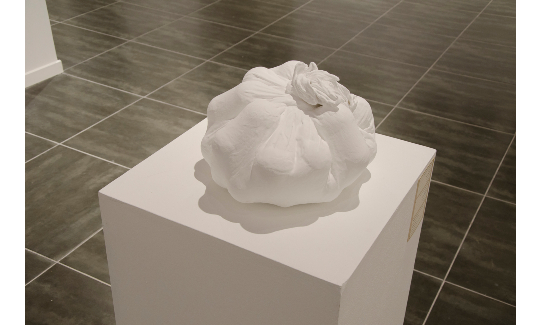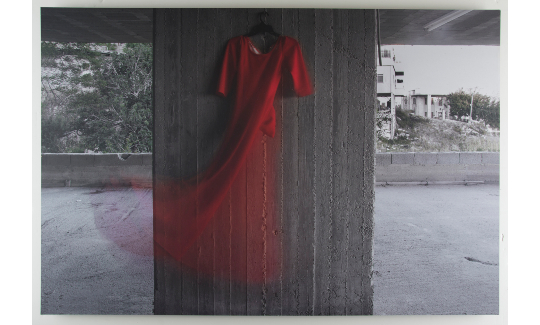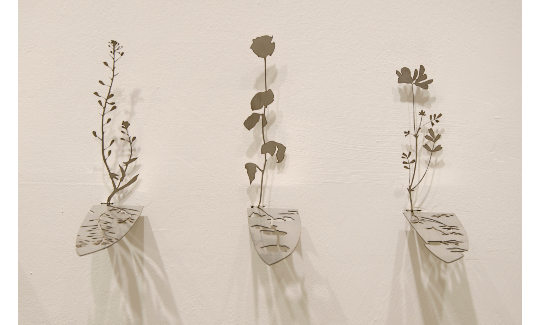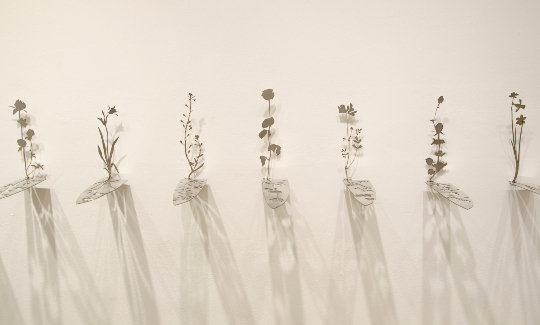Divergent Memories: New Acquisitions in the Museum Collection
Thursday, 11.07.19, 20:00
Friday, 24.01.20
:
Revital Silverman Grun
More info:
04-6030800
The exhibition presents newly acquired works from the collection of the Haifa Museum of Art. The collection's expansion, preservation, and display are a vital and important part of the museum's activity. Above all, a museum's collection is that which distinguishes it from others. In 2018 the Haifa Museum of Art acquired contemporary Israeli artworks, all of them dating from 2000 or later, created in a range of media: painting, drawing, sculpture, installation, and photography. Some are now being exhibited for the first time.
In Orly Hummel's work Lamentation no. 2 (2009), the hands express mourning over a personal or collective loss. The feminine hands and the lace fabric situate the work in a nostalgic, emotional, poetic, and feminine space. The artist plays on the relationship between plaster and the soft, delicate, and fragile quality of lace. The hands are able to express that for which there are no words. According to anthropologist John Russell Napier (1980), if language serves man in concealing his thoughts, the hands reveal them.
In the photograph Rocks in Bil'in's Skies (2009), by Pavel Wolberg, a Palestinian protester is seen throwing a stone in a confrontation at the separation barrier. The dissonance between the stone thrower and the sky is striking; the sky fills two-thirds of the frame. There is no sense of triumph, despite the low-angle shot. The angle amplifies the dramatic atmosphere, lending the Palestinian stone thrower a threatening appearance.
Nardin Srouji's work Bundle I (2018) presents a familiar symbol of exile and flight. The sculpture is characterized by soft, round lines created by the contours of the objects held in the bundle. The choice of white, a color associated with galleries and museums, expresses a critical statement by the Palestinian artist, who uses a color suited to the taste of the Israeli establishment. The white color also recalls the white fabrics used to cover furniture when leaving home for a long period of time.
The idea for Shai Erik's installation, called Uprising I (2016), arose during the so-called Knife Intifada in 2015-2016. The blades, facing the viewer, threaten to strike again. The flowers growing out of the knives are local Israeli and Palestinian species. They are delicate, yet made of cold metal; they are flat and colorless.
Orly Montag's terracotta sculpture, Untitled (2016), is part of a series of figures incorporated in a structure resembling an earthy rock. Montag chooses to depict different aspects of man's relationship with his home and environment. The figure's grasp on the ground is a natural connection, with the branches expressing its spiritual growth. In a similar vein, the metamorphosis in Yael Balaban's The Cherry Blossom (2017), from the series "Tree Couple Yoga," allows the couple, seen from a bird's-eye view, to merge with the infinite.
In her painting Human Nature (2014), Maya Israel depicts an imaginary reality in expressive, color-filled brushstrokes. The tension charging the painting originates in the concealment and dismantling of the figure through alternating acts of construction and erasure.
In the photograph Nablus (2014), Palestinian artist Ruba Amira Salameh explores themes such as identity, space, and boundaries. The female figure at the center of the composition is Salameh herself, seen standing on a richly ornamented rug, dressed in modern clothing – jeans. The juxtaposition of the jeans and the rug creates a confrontation between modern and traditional. The dress in Amira Zian's Red Dress (2016) represents femininity, softness, and freedom, with a background of hard concrete representing stability. The gradually disappearing image seems to question whether modern clothing should be renounced in favor of traditional garments. The red dress is a personal image, the artist's self-portrait, yet also a symbolic image that raises questions regarding femininity and social and cultural identity.
The new works in the museum's collection indicate an ongoing preoccupation among contemporary artists with the issues of conflict between competing myths, tensions between highly differing memories, and the confrontation between tradition and modernity. All these are factors shaping the identity of the individual and society and providing inspiration for the artistic process.

